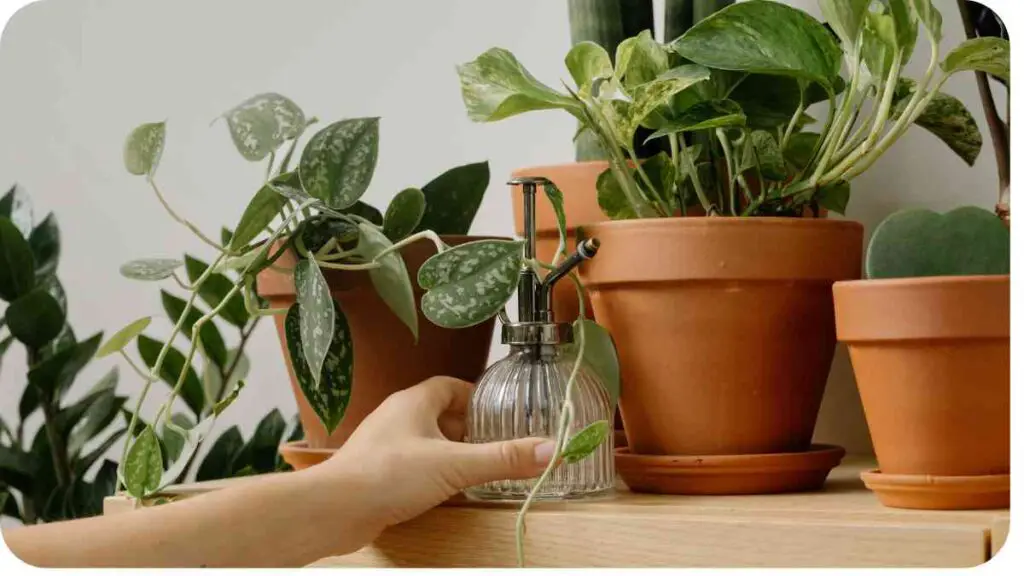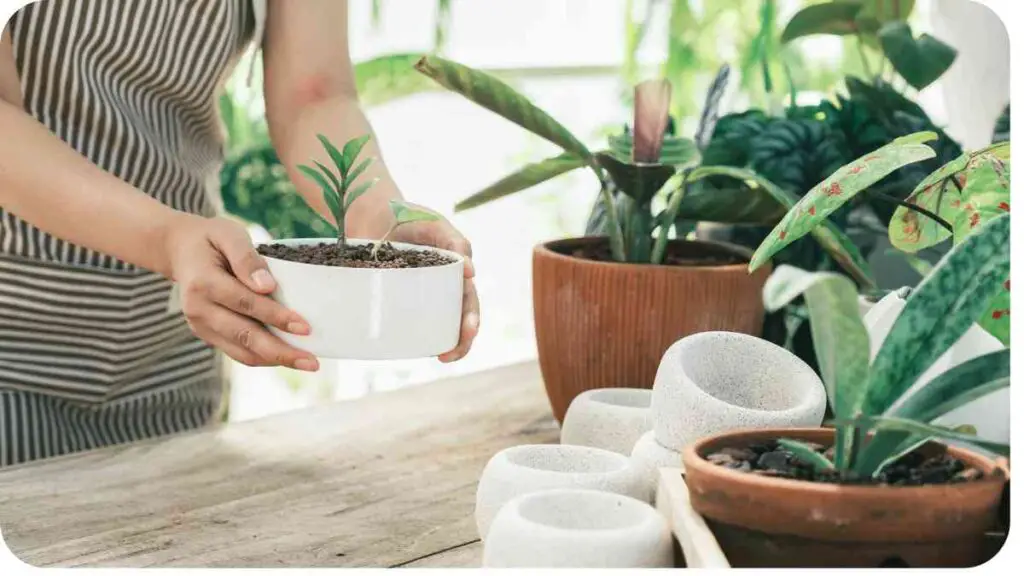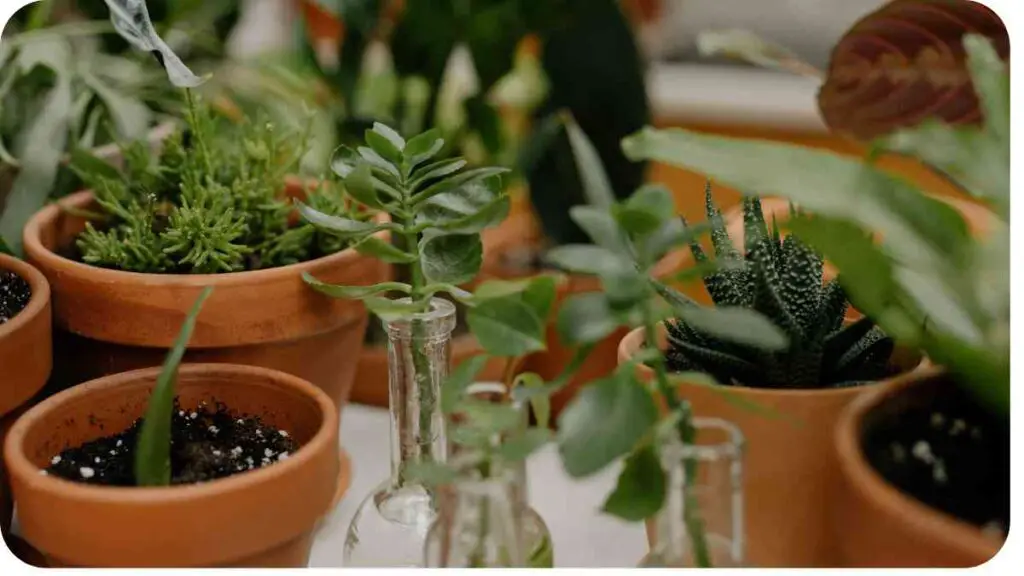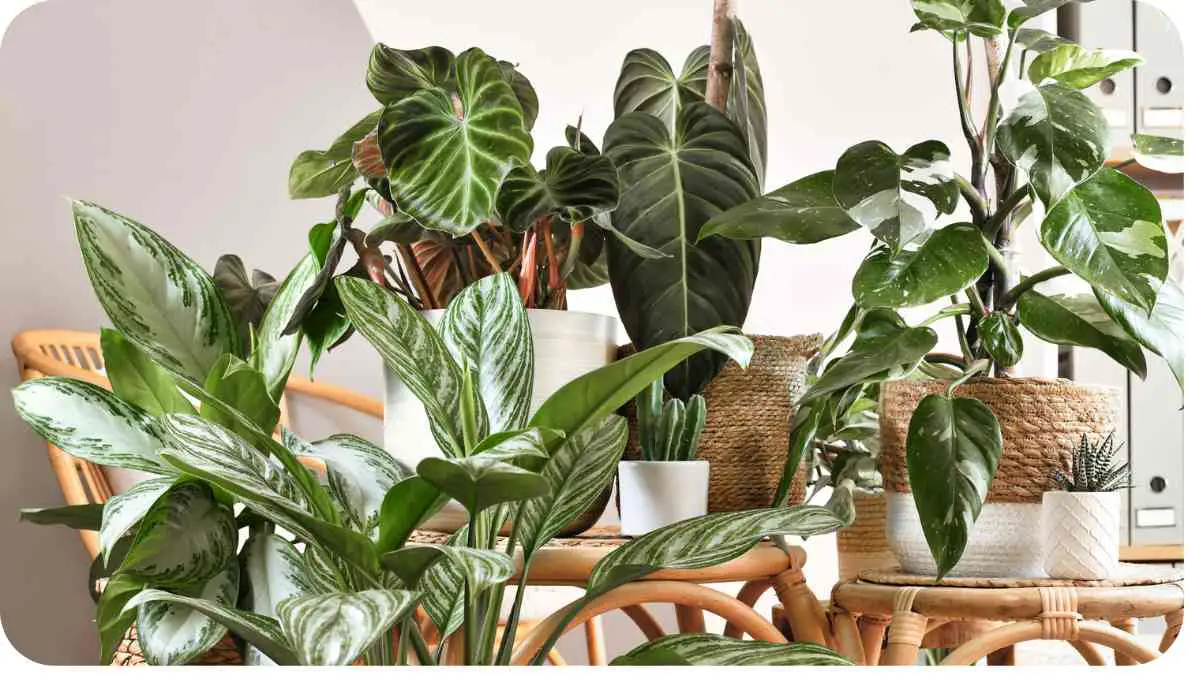Houseplants not only add beauty and life to indoor spaces but also provide numerous health benefits. However, maintaining healthy houseplants requires proper care and attention. In this guide, we’ll explore how to green up your houseplants and ensure they thrive.
| Takeaways |
|---|
| 1. Understanding plant health is essential for maintaining vibrant houseplants. |
| 2. Assess your houseplant’s needs, including light, water, soil, and nutrients. |
| 3. Choose the right location and provide adequate lighting for optimal growth. |
| 4. Proper watering techniques are crucial to prevent overwatering or underwatering. |
| 5. Select the right soil mix and fertilize your plants according to their needs. |
| 6. Regular pruning, grooming, and pest management help maintain plant health. |
| 7. Monitor your houseplants’ health regularly and address any issues promptly. |
| 8. Further reading and FAQs can provide additional tips and information for success. |
2. Understanding Plant Health

Before diving into specific care routines, it’s essential to understand the signs of unhealthy houseplants. By recognizing these signs early on, you can take corrective measures to restore your plants’ health.
To ensure the vitality of your indoor greenery, comprehensive guide recommends proactive measures against root rot. By implementing these strategies, you can safeguard your beloved houseplants from this common threat.
Table: Common signs of unhealthy houseplants
| Sign | Description |
|---|---|
| Wilting leaves | Indicates underwatering or root rot |
| Yellowing foliage | Could be a sign of overwatering or nutrient deficiency |
| Brown tips | Often caused by dry air or over-fertilization |
| Drooping stems | Could indicate insufficient light or overwatering |
| Pests or diseases | Visible insects or spots on leaves |
3. Assessing Your Houseplant’s Needs
Each houseplant has unique requirements based on its species and environmental conditions. Understanding these needs is crucial for providing appropriate care.
Table: Basic care requirements for common houseplants
| Houseplant | Light Requirements | Watering Frequency | Soil Type | Fertilization |
|---|---|---|---|---|
| Snake Plant | Low to medium | Every 2-4 weeks | Well-draining | Monthly |
| Pothos | Low to medium | Weekly | Well-draining | Bi-monthly |
| Spider Plant | Medium to bright | Weekly | Well-draining | Monthly |
| Peace Lily | Medium to bright | Weekly | Moist | Monthly |
4. Choosing the Right Location
Placing your houseplants in the right location is vital for their health and growth. Consider factors such as light intensity and humidity levels when selecting a spot for your plants.
When it comes to maintaining indoor plant health, keeping pests at bay is crucial. Learn effective techniques to keep cockroaches out and preserve the well-being of your indoor green companions.
5. Providing Adequate Lighting

Light is one of the most critical factors influencing plant growth. Different houseplants have varying light requirements, so it’s essential to choose the right location based on their needs.
Table: Light requirements for different types of houseplants
| Light Level | Suitable Plants |
|---|---|
| Low | Snake Plant, Pothos |
| Medium | Spider Plant |
| Bright | Peace Lily |
6. Proper Watering Techniques
Overwatering is one of the most common reasons for houseplant problems. Understanding the proper watering techniques can help prevent root rot and other issues.
Table: Watering frequency for various houseplants
| Houseplant | Watering Frequency |
|---|---|
| Snake Plant | Every 2-4 weeks |
| Pothos | Weekly |
| Spider Plant | Weekly |
| Peace Lily | Weekly |
7. Choosing the Right Soil
The type of soil you use can significantly impact your houseplants’ health. Most houseplants thrive in well-draining soil that allows for proper root aeration and moisture retention.
Table: Comparison of different types of potting mixes
| Soil Type | Description | Suitable Plants |
|---|---|---|
| Peat-based mix | Retains moisture well but may compact over time | Tropical plants, ferns |
| Perlite mix | Provides excellent drainage and aeration, prevents soil compaction | Succulents, cacti |
| Bark mix | Lightweight and promotes airflow, ideal for epiphytic plants | Orchids, bromeliads |
| Cactus mix | Well-draining and low in organic matter, prevents root rot | Cacti, succulents |
8. Fertilizing Your Houseplants
While soil provides essential nutrients, houseplants may require additional fertilization to support healthy growth. Choose a fertilizer specifically formulated for indoor plants and follow the recommended application rates.
Discover the optimal solutions for nurturing your indoor plants with a comprehensive guide to spraying techniques. Ensure your plants thrive with the right treatments for various pests and issues.
Table: Common types of houseplant fertilizers and their application methods
| Fertilizer Type | Description | Application Method |
|---|---|---|
| Liquid fertilizer | Quick-acting and easily absorbed by plants | Dilute and apply to soil |
| Slow-release pellets | Releases nutrients gradually over time, reducing the risk of overfeeding | Mix into soil or top dress |
| Granular fertilizer | Provides long-lasting nutrition, ideal for established plants | Sprinkle around the base of the plant |
9. Pruning and Grooming
Regular pruning and grooming are essential for maintaining the health and appearance of your houseplants. By removing dead or yellowing leaves, you can prevent the spread of disease and encourage new growth.
Table: Pruning needs for different types of houseplants
| Houseplant | Pruning Requirements |
|---|---|
| Snake Plant | Remove dead or damaged leaves as needed |
| Pothos | Trim leggy stems and remove yellowing leaves |
| Spider Plant | Remove brown tips and prune overcrowded stems |
| Peace Lily | Trim spent flowers and yellowing leaves |
10. Dealing with Pests and Diseases

Despite your best efforts, houseplants may still face pests and diseases. Early detection and prompt treatment are crucial for preventing infestations and minimizing damage.
Table: Common houseplant pests and diseases and their treatments
| Pest/Disease | Symptoms | Treatment |
|---|---|---|
| Aphids | Small, soft-bodied insects on leaves | Wash leaves with soapy water or use insecticidal soap |
| Spider mites | Fine webbing on leaves, stippling | Rinse leaves with water or use neem oil spray |
| Fungal leaf spots | Circular brown spots on leaves | Remove affected leaves and improve air circulation |
11. Troubleshooting Common Problems
Even with proper care, houseplants can still encounter various issues. Knowing how to troubleshoot common problems can help you address issues promptly and prevent further damage.
Explore the longevity of indoor plants and gain insights into factors influencing their lifespan. Delve into the question: Do indoor plants last all year and learn how to maintain their health throughout the seasons.
Table: Common houseplant problems and solutions
| Problem | Symptoms | Solution |
|---|---|---|
| Overwatering | Wilting, yellowing leaves, root rot | Allow soil to dry out between waterings |
| Underwatering | Wilting, dry, crispy leaves | Increase watering frequency and check soil moisture |
| Nutrient deficiency | Yellowing leaves, stunted growth | Fertilize with a balanced houseplant fertilizer |
| Low humidity | Brown leaf tips, dry air | Increase humidity by misting or using a humidifier |
| Rootbound | Stunted growth, roots circling the pot | Repot into a larger container |
12. Monitoring Plant Health
Regularly monitoring your houseplants’ health is essential for detecting problems early and ensuring they receive the care they need. Keep an eye on their growth, foliage color, and overall appearance.
Elevate the aesthetic appeal of your potted plants with expert tips on design and presentation. Discover creative methods to make potted plants pretty and transform your indoor greenery into stunning decorative features.
13. Conclusion
Keeping your houseplants healthy and thriving requires a combination of proper care, attention to detail, and timely intervention. By understanding their needs and addressing any issues promptly, you can enjoy lush, green foliage year-round.
If you have any further questions or need assistance with your houseplant care, don’t hesitate to reach out to us. Happy gardening!
Further Reading
Here are some additional resources for further tips and information on keeping your houseplants green and healthy:
- How to Keep Your Indoor Plants Green: This article offers practical advice on maintaining indoor plants’ health and vibrancy.
- Green Up Your Home with Plants: Learn how to enhance your home’s ambiance with the addition of lush greenery.
- Fertilizing Indoor Plants: Discover the best practices for fertilizing indoor plants to promote optimal growth and vitality.
FAQs
How often should I water my houseplants?
Watering frequency depends on factors such as plant type, pot size, and environmental conditions. It’s essential to check the soil moisture level regularly and water when the top inch of soil feels dry.
What are some common pests that affect indoor plants?
Common pests include aphids, spider mites, and mealybugs. Regular inspection of your plants can help detect pest infestations early so that appropriate measures can be taken to control them.
How do I know if my houseplant needs repotting?
Signs that a plant needs repotting include roots growing out of the drainage holes, soil drying out quickly, and stunted growth. Check the roots by gently removing the plant from its pot to assess their condition.
Can I use regular garden soil for my indoor plants?
It’s not recommended to use garden soil for indoor plants, as it may contain pests, pathogens, and poor drainage. Instead, opt for a well-draining potting mix specifically formulated for indoor plants.
How can I increase humidity for my houseplants?
You can increase humidity by placing a tray filled with water and pebbles near your plants, using a humidifier, or misting the leaves regularly. Grouping plants together can also help create a microclimate with higher humidity levels.

For 15 years, Hellen James has worked in the gardening industry as an expert and landscape designer. During her career, she has worked for a variety of businesses that specialize in landscaping and gardening from small firms to large corporations.

